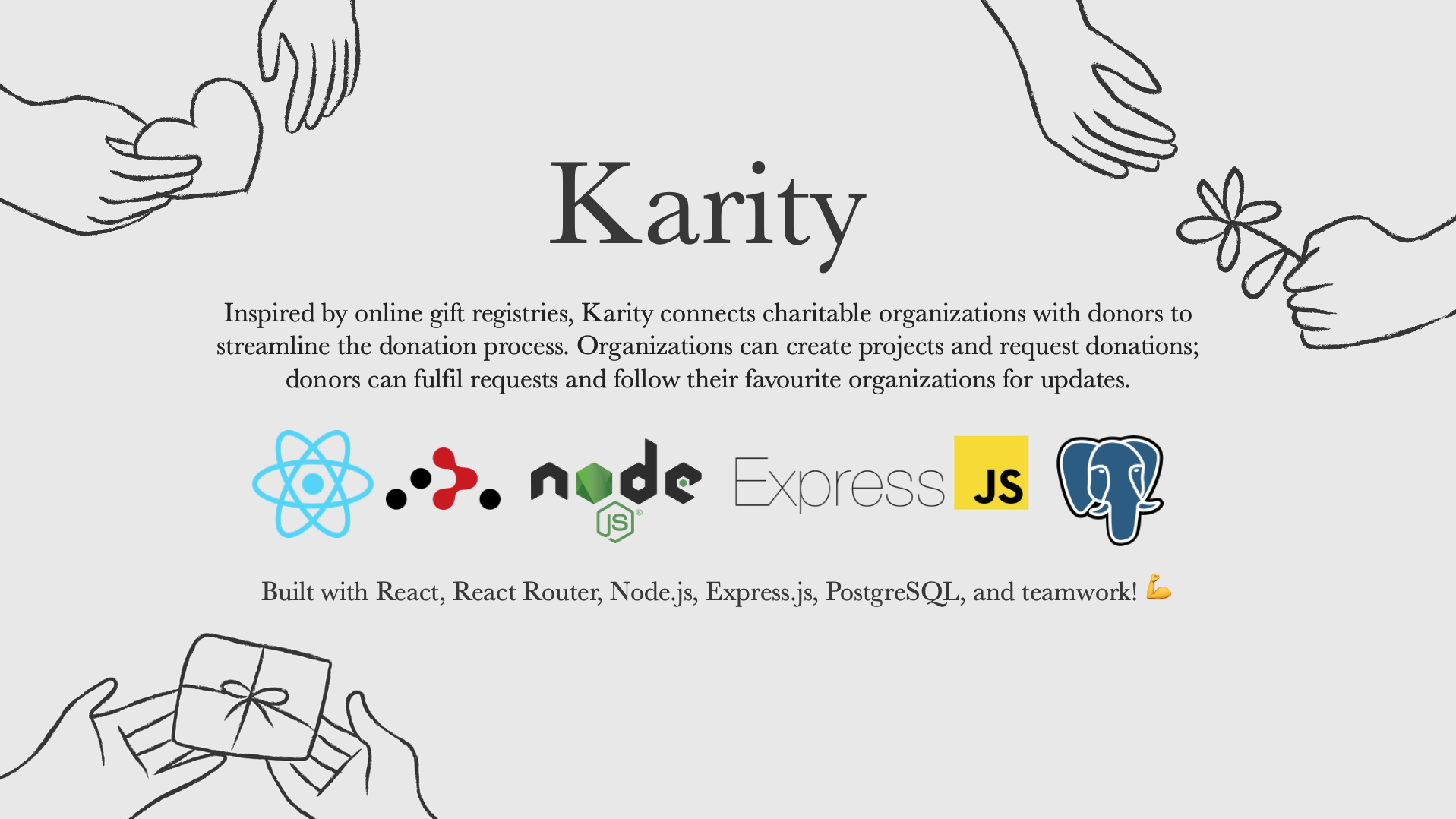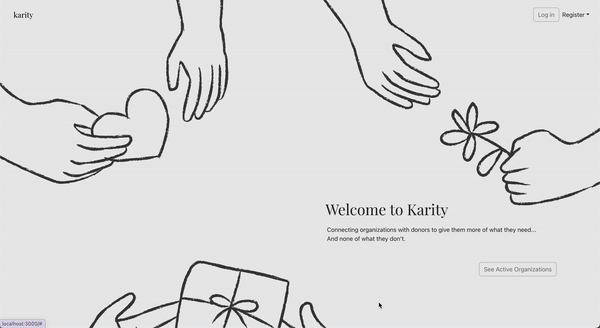Final project for Lighthouse Labs Full-Stack Web Development Bootcamp created by Kevin Lobsinger, Andrijana Zivkovic, and Rebecca Ariss (putting the K, A, and R in Karity)! 👩🏼💻👨🏼💻👩🏼💻
This represents a typical user flow for the app by a donor. Once logged in, donors arrive at a feed showing active projects for the organizations that they follow. After clicking on a project, the donor can donate requested items or money to a fundraiser. They can then review a history of their donations under My Donations. They can also explore all organizations registered to the app under Organizations.
- React
- React Router
- CSS
- Node
- Express
- PostgreSQL
- A platform for charities/organizations to specify exactly what they need (specific items/resources, money, or volunteer time)
- Donors can choose and fulfill needs requests for their favourite organizations and follow organizations for updates
- Charities are more effective if they can directly ask for and get what they need
- Users can feel good about making a real difference
- This platform avoids the donation of duplicate items, potentially resulting in wasted resources
- Users can feel more socially connected to the organizations they care about
- Functions much like an online baby or wedding registry
- Organizations list items that they need, donors can "claim" those items and check them off of the list when there is a confirmation of donation
Problem: A food bank might have a ton of peanut butter but not enough dry cereal to meet the needs of their community.
- Solution: They can list the number of cereal boxes needed and keep track of how many have been donated since the request was posted.
Problem: An animal shelter might have a lot of cat litter but needs a large donation of kitten milk replacement for many incoming kittens.
- Solution: They can list the number of items needed and keep track of how many have been donated since the request was posted.
Problem: An environmental organization might require volunteers for a petition, litter cleanup, protest, etc.
- Solution: They can list roughly how many hours would be required of volunteers to complete a project (or roles that need to be held over a longer period of time).
Problem: An advocacy group might have an active fundraiser to support the needs of a family affected by extreme medical debt.
- Solution: They can post an active fundraiser which keeps track of the overall goal for funding & how much has been raised to date.
- Create the
.envby using.env.exampleas a reference:cp .env.example .env - Update the .env file with your correct local information
- username:
labber - password:
labber - database:
midterm
- Install dependencies:
npm i - Fix to binaries for sass:
npm rebuild node-sass - Reset database:
npm run db:reset
- Check the db folder to see what gets created and seeded in the SDB
- Run the server:
npm run local
- Note: nodemon is used, so you should not have to restart your server
- Visit
http://localhost:8080/
- Do not edit the
layout.cssfile directly, it is auto-generated bylayout.scss. - Split routes into their own resource-based file names, as demonstrated with
users.jsandwidgets.js. - Split database schema (table definitions) and seeds (inserts) into separate files, one per table. See
dbfolder for pre-populated examples. - Use helper functions to run your SQL queries and clean up any data coming back from the database. See
db/queriesfor pre-populated examples. - Use the
npm run db:resetcommand each time there is a change to the database schema or seeds.- It runs through each of the files, in order, and executes them against the database.
- Note: you will lose all newly created (test) data each time this is run, since the schema files will tend to
DROPthe tables and recreate them.
- Node 10.x or above
- NPM 5.x or above
- PG 6.x


